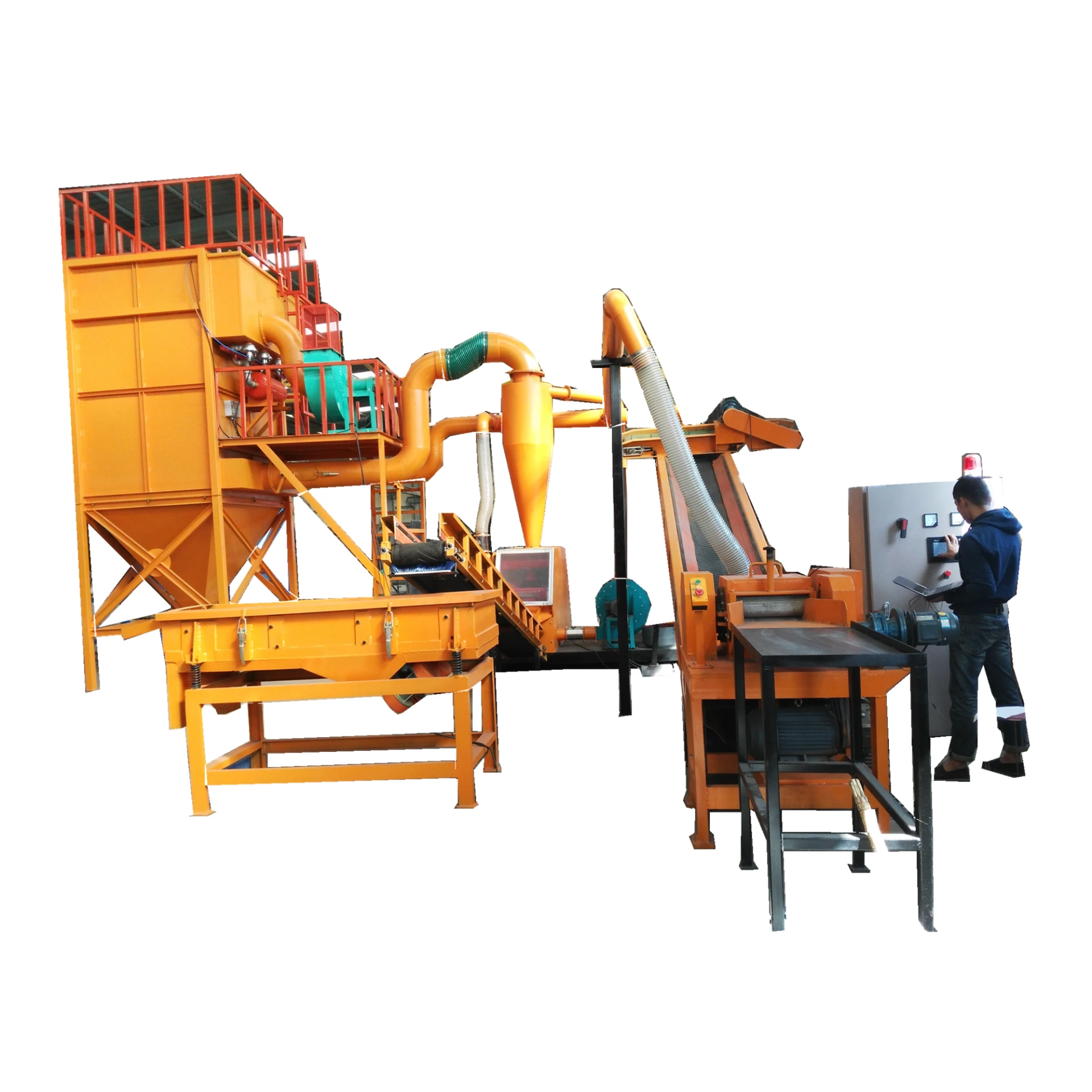

Nov . 10, 2024 17:24 Back to list
How Are Metals Sorted in Recycling Plants?
Recycling has become an essential part of managing waste and conserving natural resources. Among the materials that are extensively recycled, metals hold a significant position due to their economic value and recyclability. The process of sorting metals in recycling plants is a complex yet efficient operation that ensures that valuable resources are recovered and reused.
The Importance of Metal Recycling
Before delving into the sorting process, it is crucial to understand why metal recycling is necessary. Metals are derived from the Earth's crust through mining, a process that is both environmentally taxing and resource-intensive. By recycling metals, we reduce the need for new mining and minimize pollution, energy consumption, and greenhouse gas emissions. Moreover, recycling helps to conserve the finite resources of our planet while contributing to a circular economy where materials are continuously reused.
Collection and Initial Processing
The journey of metal recycling begins with the collection of scrap metals from various sources, including households, industrial sites, and construction projects. Once collected, the materials are transported to recycling plants, where initial processing occurs. During this phase, workers perform a preliminary sorting to separate metals from non-metal materials (such as plastics and wood) and to remove any contaminants that could affect the recycling process.
Sorting Technologies
After the initial cleaning and sorting, advanced technologies come into play. The primary methods of metal sorting in recycling plants include
1. Magnetic Separation One of the most widely used techniques, magnetic separation, exploits the magnetic properties of ferrous metals (like iron and steel). Conveyors carry the material past powerful magnets that automatically pull out the ferrous metals, leaving behind non-magnetic materials.
2. Eddy Current Separation For non-ferrous metals such as aluminum and copper, eddy current separation is employed. This method uses high-frequency magnetic fields to induce currents in the metals. The generated magnetic fields repel the metals, causing them to be ejected from the conveyor belt at a separate location.

3. Optical Sorting With advancements in technology, optical sorting has become increasingly popular. This method uses cameras and light sensors to identify different types of metals based on their color and reflectivity. Optical sorters can distinguish between various metals and even identify specific alloys, allowing for a highly refined sorting process.
4. Density Separation This method involves using water or air to separate materials based on their density. Heavier metals sink to the bottom while lighter materials float, allowing for further classification.
5. Manual Sorting Although automated processes dominate, manual sorting is still an essential component of metal recycling. Skilled workers can identify and separate certain metals that machines might miss. This human element is crucial, particularly for mixed metal streams where complexities arise.
Final Processing and Reintroduction
Once the metals are sorted, they undergo further processing to prepare them for recycling. This includes shredding the metals into smaller pieces, which facilitates melting. The processed metals are then sent to furnaces where they are melted down and transformed into raw materials that can be reintroduced into manufacturing processes.
Environmental Benefits
The sorting and recycling of metals not only provide economic advantages but also yield significant environmental benefits. By recycling metals, we save energy because the process of melting metals from scrap requires significantly less energy than extracting and processing new ores. Additionally, each ton of recycled aluminum can save up to 95% of the energy needed to produce new aluminum from raw materials.
Conclusion
In conclusion, the sorting of metals in recycling plants is a critical process that requires a combination of technology and human effort. From initial collection to advanced separation techniques, each step is designed to maximize efficiency and recover valuable materials. As we continue to face environmental challenges, the importance of recycling metals cannot be overstated. By supporting metal recycling initiatives, we contribute to a more sustainable future, ensuring that resources are utilized wisely and preserved for generations to come.
Latest news
Troubleshooting Common Eddy Separator Problems
NewsJul.04,2025
The Role of Metal Recycling Plants in Circular Economy
NewsJul.04,2025
The Impact of Recycling Line Pickers on Waste Management Costs
NewsJul.04,2025
Safety Features Every Metal Shredder Should Have
NewsJul.04,2025
How Industrial Shredders Improve Waste Management Systems
NewsJul.04,2025
How Cable Granulators Contribute to Sustainable Recycling
NewsJul.04,2025